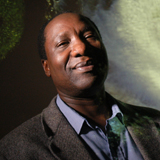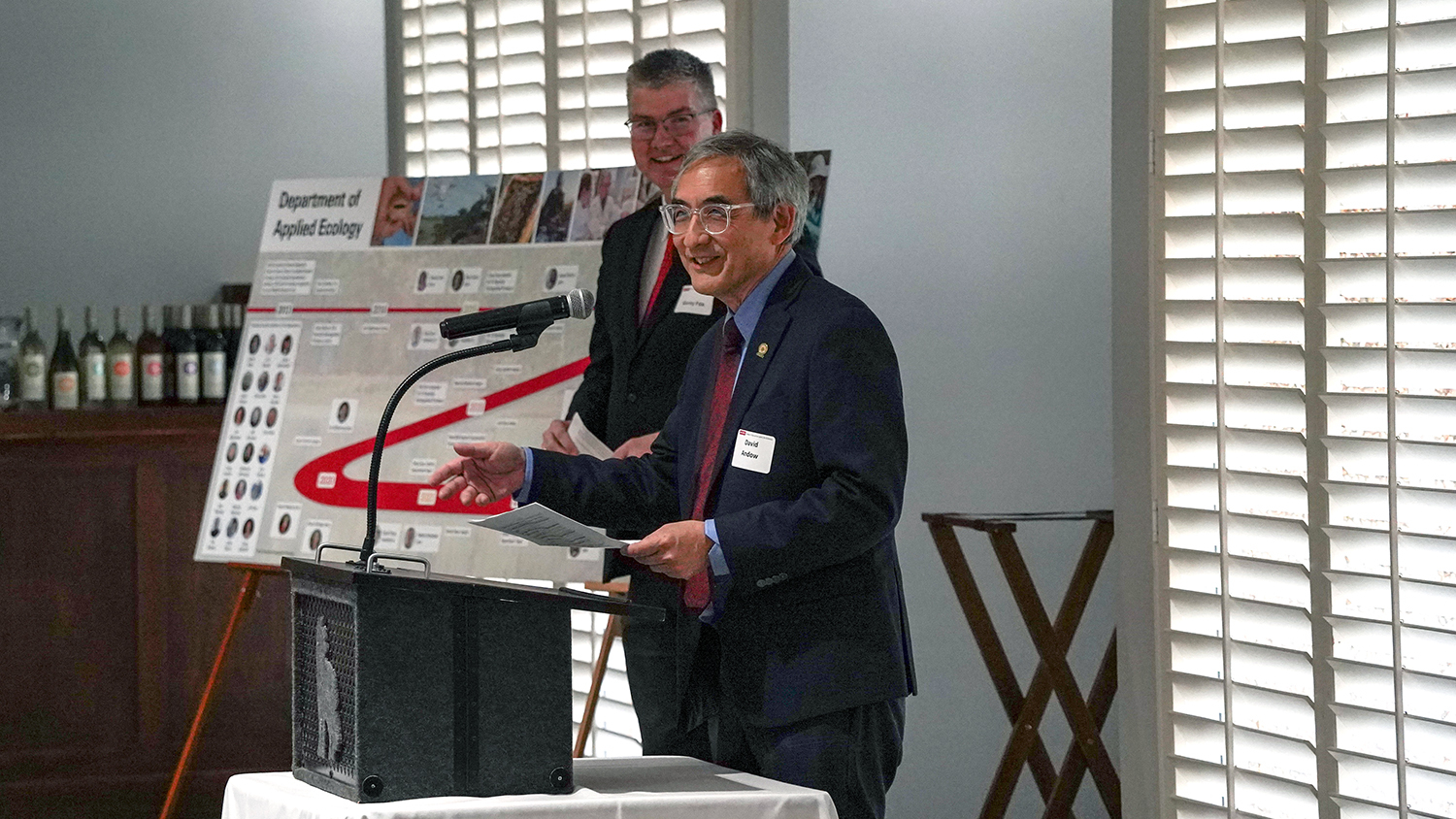Earth Day: Global Research Challenges
For more than 40 years, Earth Day has been a call to arms to appreciate and protect our natural environment. In order to accomplish that mission, we must first understand the challenges threatening our environmental health and sustainability.
With that in mind, NC State researchers – in fields ranging from wildlife ecology to meteorology to political science – briefly outline the most pressing Earth Day-relevant research questions in their respective fields.
Fred Semazzi:

In recent decades we have witnessed a dramatic increase in the number of extreme weather events throughout the world. Human activity is pushing the climate into a state of high stress that could even eventually surpass the “tipping point” of no return. To release some of the stress, climate is lashing out in form of increased extreme weather events, such as the recent record-breaking temperatures around the world; intense Atlantic hurricanes; widespread monsoon flooding in Pakistan; heat waves and wildfires in Russia; flash flooding in China; and drought followed by flash floods in Kenya and Niger. Although we can’t attribute all this to climate change it is undoubtedly “loading the dice” in favor of extreme events. There is emerging consensus that one of the leading grand challenges in climate research is to understand how climate change is altering the risk of extreme weather events. As scientists, we are using a range of methods, including high-powered computer simulation models, machine learning techniques and others to increase the understanding of the role of climate change in moderating extreme weather events and the skill of predicting them. – Semazzi is a professor of marine, earth and atmospheric sciences at NC State and a former director of the Climate Information & Prediction Services program at the World Meteorological Organization. His research focuses on climate modeling.
Gerald A. LeBlanc:

A major challenge facing the global community is to develop an understanding of the environmental health consequences of exposure to complex chemical mixtures and the means to minimize such exposures.
By the 1970s, the nation was faced with a crisis associated with the flagrant release of toxic materials into the environment. The first Earth Day raised public awareness of the fragility of the planet and the significant threat posed by toxic materials. The federal government responded to public concern by creating the Environmental Protection Agency (EPA). The EPA was charged with the responsibility of establishing limits on the levels of toxics that could be released into the environment without posing harm. Since its creation, the EPA has been highly successful in safeguarding the environment against materials that are overtly toxic to humans and wildlife. However, resolution of one problem has raised another. The environment now contains a vast array of chemicals that, individually, are present at levels that pose no harm. We are faced with the dilemma of exposure to a virtual soup of chemicals. However, the consequences of exposure to mixtures of chemicals remain largely unknown and therefore the appropriate regulatory response remains a quandary. – LeBlanc is professor and head of NC State’s Department of Environmental and Molecular Toxicology. An internationally recognized authority on endocrine disruptors and the toxicity of chemical mixtures, LeBlanc has served as an advisor to the U.S. EPA, the National Institute of Environmental Health Sciences and the United Kingdom’s Natural Environment Research Council, among others.
Ted Simons:

One of the greatest challenges we face in ecology is figuring out how to scale up our research to address pressing environmental problems that are occurring at larger spatial scales. For example, our current models of species-habitat relationships are barely adequate to predict where species will occur within a single watershed. We currently lack the data and methodologies to predict and understand the uncertainty surrounding changes in biological diversity associated with large-scale patterns of pollution and climate change. Expanding our approaches to collecting and analyzing ecological data at larger spatial scales, perhaps through carefully designed citizen-science projects, holds some promise for addressing these challenges in the future. – Simons is a professor of biology at NC State and assistant unit leader of the North Carolina Cooperative Fish and Wildlife Research Unit. His research focuses on avian ecology, wildlife biology and conservation biology.
Elizabeth Nichols:

Sustainable restoration of degraded lands is a major research challenge. Population growth and resource demands will continue to put pressure on productive lands that produce agricultural products and sustain wildlife. Restoration of impaired lands is critical to meet future needs. – Nichols is an associate professor of forestry and environmental resources. Her research includes work on persistent organic pollutant fate in the environment, particularly soils and sediments.
Francis de los Reyes:

The largest, most important, most pressing environmental problem today, in my opinion, is the crisis in water. This crisis is defined by large global inequities in access to clean water and proper sanitation. There are 2.4 million deaths per year (6,500 deaths per day) due to poor water, sanitation and hygiene. Most of the fatalities are children under age 5 in the poorest developing countries. It is unacceptable that in 2011, diarrhea kills more young children than HIV/AIDS, tuberculosis, and malaria; and that 39 percent (2.6 billion) and 13 percent (880 million) of the world’s population do not have access to improved sanitation and adequate water supply, respectively. The research needs include how to move away from traditional infrastructure paradigms and show that alternative technologies such as decentralized treatment are more appropriate and sustainable; and how to take into account socio-cultural factors, such as gender issues, religion, education, and policy contexts. How does society approach water supply and sanitation using effective and sustainable approaches that take into account technology, culture and cost? How do we solve the problems in urban environments, where the majority of future growth in population is expected? In the developed world, how do we replace an aging urban water infrastructure with a sustainable one? – de los Reyes is an associate professor of civil engineering at NC State. His research focuses on water resources and environmental engineering.
Bill Hunt:

Evaluating ecosystem services produced by various landscapes, particularly putting economics behind these services, is going to change the nature of how we protect and build future land. Stormwater control measures, for example, will not just be evaluated for their ability to reduce runoff and capture pollutants, but services like carbon sequestration and heat island impact will be an active part of practice selection. The challenge, of course, will be calculating the true economic worth of ecosystem services. An all-encompassing environmental and economic evaluation will become an integral part of decision making. – Hunt is an associate professor of biological and agricultural engineering at NC State. His research focuses on stormwater management.
Viney Aneja:

The United States and Western Europe have made significant advances in confronting atmospheric environmental challenges by developing the scientific and technological basis for air-quality measurements, modeling, analysis and policies for mitigation over the past few decades. However, given the global nature of environmental concerns (e.g., the global distribution of long-lived species such as Hg, CO2, and other greenhouse gases; the inter-continental transport of shorter-lived pollutants; and global climate change) the scope of these scientific advancements needs to be expanded. The rapid growth of the global economy, spurred by industrial and urban expansion, has been accompanied by environmental stresses, particularly in air quality and climate (e.g. China and India). Major air-quality studies in the U.S. have focused primarily on extra-tropical urban emissions and meteorology. Limited attention has been focused on tropical/sub-tropical regions such as South Asia which contribute significantly to the global air pollution burden.
China and India have been cited as two of the five fastest growing economies in the world, but this growth has become increasingly attended by concerns regarding its impact on the environment – in particular, the impact of air pollution on climate and human health. The explosion of vehicular traffic in both urban and rural areas, as well as the rapid transition from a predominantly agricultural to a mixed agro-industrial economy, has led to adverse environmental impacts. From the perspective of air quality science, the challenges are to accurately characterize the chemical processes in the regional environment and their response to the prevailing meteorological conditions. And to quantify the emissions from the responsible sources and their representation in current photochemical modeling applications over the tropical region. – Aneja is a professor of marine, earth and atmospheric sciences at NC State. Aneja is an internationally recognized authority on air quality and has served as a scientific advisor to the U.S. EPA and U.S. Department of Agriculture on air quality issues.
Lada Kochtcheeva:

One of the most important challenges facing domestic and international policy is resolving the complex relationship between globalization and the environment. Globalization impacts the environment in multiple ways, and the global economic crisis has sharpened many conflicting arguments regarding: the nature and consequences of globalization; the character of environmental transformation; and the linkages between global economic and political processes and domestic environmental responses. Is globalization a sign of progress, increased wealth, policy innovations and environmental solutions? Or is it an agent and force of environmental degradation, instability and poor policies? No single conception of the relation between globalization and environment can be entirely unambiguous, unbiased and everlasting. All facets of globalization influence human development and, through it, the natural environment. The goal is to trace the main linkages between globalization and the environment through institutional, technology/product, policy and societal effects. Globalization accelerates structural and institutional change, thus altering the industrial and policy structures of countries, as well as resource use and environmental degradation levels. Yet it may also generate pressures for reform, creating opportunities for attracting international interest. – Kochtcheeva is an assistant professor of political science at NC State, and author of Comparative Environmental Regulation in the United States and Russia: Institutions, Flexible Instruments, and Governance. Her research focuses on environmental policy.
Derek Aday:

I think one of the biggest research challenges is how we’ll deal with a global population that is increasing in number and affluence. Human population growth underpins all of the environmental challenges that headline daily news, including global climate change, habitat modification that leads to loss of biodiversity, food and water scarcity, and the accumulation of air and water contaminants. Increasing affluence of the global population exacerbates those issues, particularly in relation to demand for natural resources. The research challenge in all of this is how to go about asking the right questions, prioritizing approaches and synthesizing answers at a pace commensurate with a rapidly changing environment. – Aday is an assistant professor of biology at NC State whose work focuses on fisheries, ecology and aquatic science.


